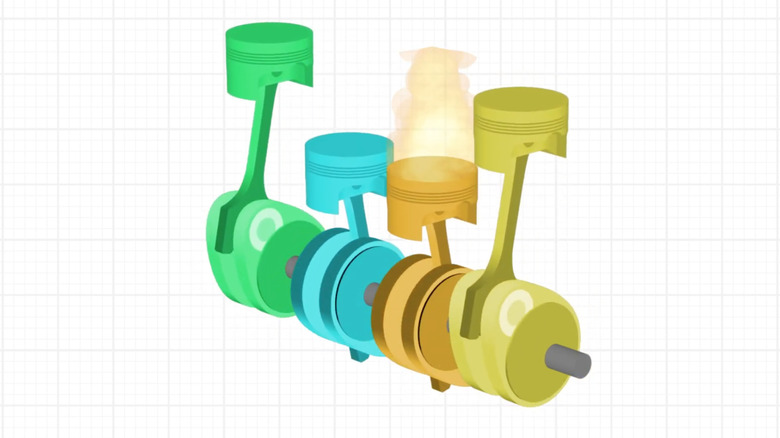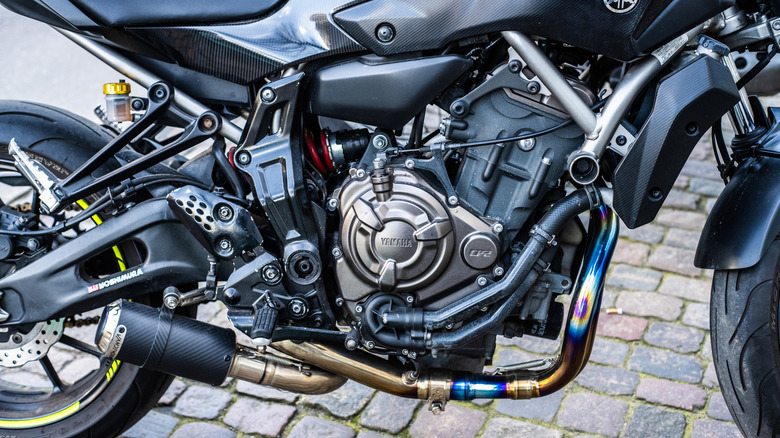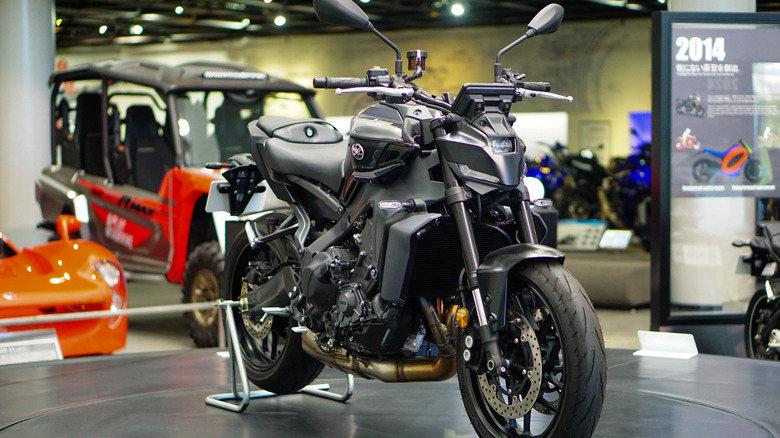
Yamaha's crossplane crankshaft, first seen on the 2009 YZF-R1, rewired how liter-class bikes felt under throttle. Traditional inline-four engines fire two pistons simultaneously at 180-degree intervals, causing torque pulses that can unsettle the chassis under aggressive inputs. Yamaha's crossplane (not to be confused with flat-plane) configuration staggers the firing order at 90-degree intervals. That means the engine delivers torque more evenly, especially when cornering.
What riders notice is a smoother,
more predictable drive. When you roll on the throttle mid-corner, the rear tire hooks up instead of spinning unpredictably. That stability boosts confidence, letting riders push harder with less risk of high-siding the bike.
The engine doesn't just behave differently, it sounds different too. The uneven firing intervals produce a deep, V4-like growl instead of a high-rev scream. Although it resulted in some of the best-sounding motorcycles ever made, the sound is a byproduct, not the purpose. Despite its namesake, Yamaha didn't build this engine to impress your ears. They built it to change how the bike puts power down, and it worked. No other manufacturer in 2009 had anything like it.
Read more: Every Motorcycle Keanu Reeves Owns In His Stunning Collection
Yamaha's Feel First Philosophy Made It Work

Where other manufacturers chased spec sheets, Yamaha focused on what riders actually feel: it refined any chassis flex, damping response, and throttle response around this crankshaft design. Every piece of the R1M, from the aluminum Deltabox frame, to the Öhlins Electronic Racing Suspension, complements the crossplane engine's unique rhythm.
In a typical sportbike, sharp throttle inputs can unsettle the chassis. Yamaha's approach buffers that tension, and even engine braking is handled more gradually, letting the suspension and tires settle instead of getting jerked around. This is all in service to making the rider feel connected to the bike. Whether you're trail-braking into a corner or rolling out of a slow hairpin, the bike stays planted.
This didn't happen by accident: Test riders, including former racers, spent years fine-tuning how every subsystem responded to real-world inputs. Even small delays in chassis reaction or damping feel were dialed in. The result is a bike that reacts exactly how you expect, making you ride better without even realizing it.
It Changed The Game, On And Off The Track

Yamaha's crossplane tech started at the 2009 R1, but expanded across the lineup. The CP3 triple in the MT-09 and XSR900, and the CP2 parallel twin in the MT-07 and Tenere 700, both take cues from the crossplane firing philosophy. They're not identical in layout, but they mimic the staggered pulse and torque feel.
Even Yamaha's MotoGP engines feed into this. The YZR-M1, built around a crossplane V4, helped shape how the R1M was tuned for rider comfort at the limit. When Ken Nemoto, a 750cc All Japan champion with 50+ years of riding experience, tested the R1M, he admitted he was intimidated by the bike at first. However, by the end of his ride, he was grinning inside his helmet. Because Yamaha focused on ride feel during the powerplant's development, crossplane crankshaft tech reshaped how sportbikes handle, sound, and connect with riders.
Want the latest in tech and auto trends? Subscribe to our free newsletter for the latest headlines, expert guides, and how-to tips, one email at a time.
Read the original article on SlashGear.










